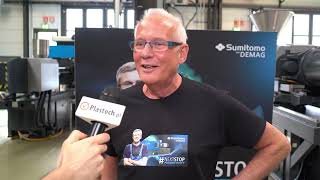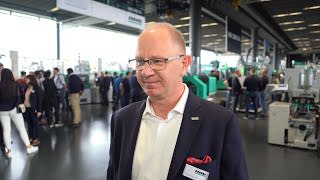With the high standards of quality and performance offered by these new machines, Jász-Plasztik was able to meet the demands of the large electronics companies, such as Sony, Philips, Sharp and Samsung, that were setting up new production facilities for TV sets in Hungary and Slovakia at the same time as Jász-Plasztik was developing into a contract supplier of high-quality components.
Moreover, Jász-Plasztik`s existing contacts with the Lehel refrigerator factory, also located in Jászberény and now a member company of the Electrolux Group, stood it in very good stead for future business in the white goods market. Of the 153 injection moulding machines currently in service, as many as 110 are from Engel. Remarkably, half of them are large-capacity machines with clamping forces of 5,000 kN and over - one of them with a clamping force of 32,000 kN.
This development towards ever larger machine capacities directly reflects the evolution of TV technology and Jász-Plasztik?s growing specialization in this market segment of the market. Until a few years ago cathode ray sets with a 4:3 screen format and screen diagonals up to 28 inch (71 cm) were state-of-the-art.
Now they are being replaced by the new plasma and LCD technology, with the 16:9 screen format as the prevailing standard. As screen diagonals of between 30 and 63 inch are now technically feasible, the demand for correspondingly large housings is growing steadily.
The specific criteria governing this category of moulded part are not just the steadily increasing dimensions but also the steadily growing demands made on the surface finish, especially on that of the screen surround. Moreover, this surface finish is no longer produced by painting or surface coating in a downstream process but rather in just one, economically efficient, single-stage injection moulding process, in which the moulded part emerges from the machine complete with a high gloss surface - without flow lines or other blemishes.
These demands are being met by various methods, the most important one currently being the so-called variothermal mould cooling process. With this process, the high gloss surface of the cavity is rapidly heated immediately prior to injection of the melt and then not cooled until the cavity is filled. The heated surface blends the flow lines and other surface blemishes, resulting in a perfectly smooth and uniform gloss finish.
The process is also more efficient, as further downstream finishing is no longer required, and offers enormous potential for innovation in product design. But what sounds so simple is in fact a complex process technology that in practice has to find an economically viable compromise between the best possible surface finish and the shortest possible cycle time. This application is not just of interest to manufacturers of flatscreen TV sets but offers new design potential for a diversity of automotive components and household appliances.
Both Jász-Plasztik and Engel place the development of processes for the production of high gloss, blemish-free injection moulded parts high on their list of priorities. Yesterday a contract injection moulder, today an active technology partner in product development, Jász-Plasztik numbers among Europe?s leading processors - a remarkable accomplishment considering its short history and the economic constraints of the first few years.
A visit to Engel's customers
- Pages:
- 1
- 2



